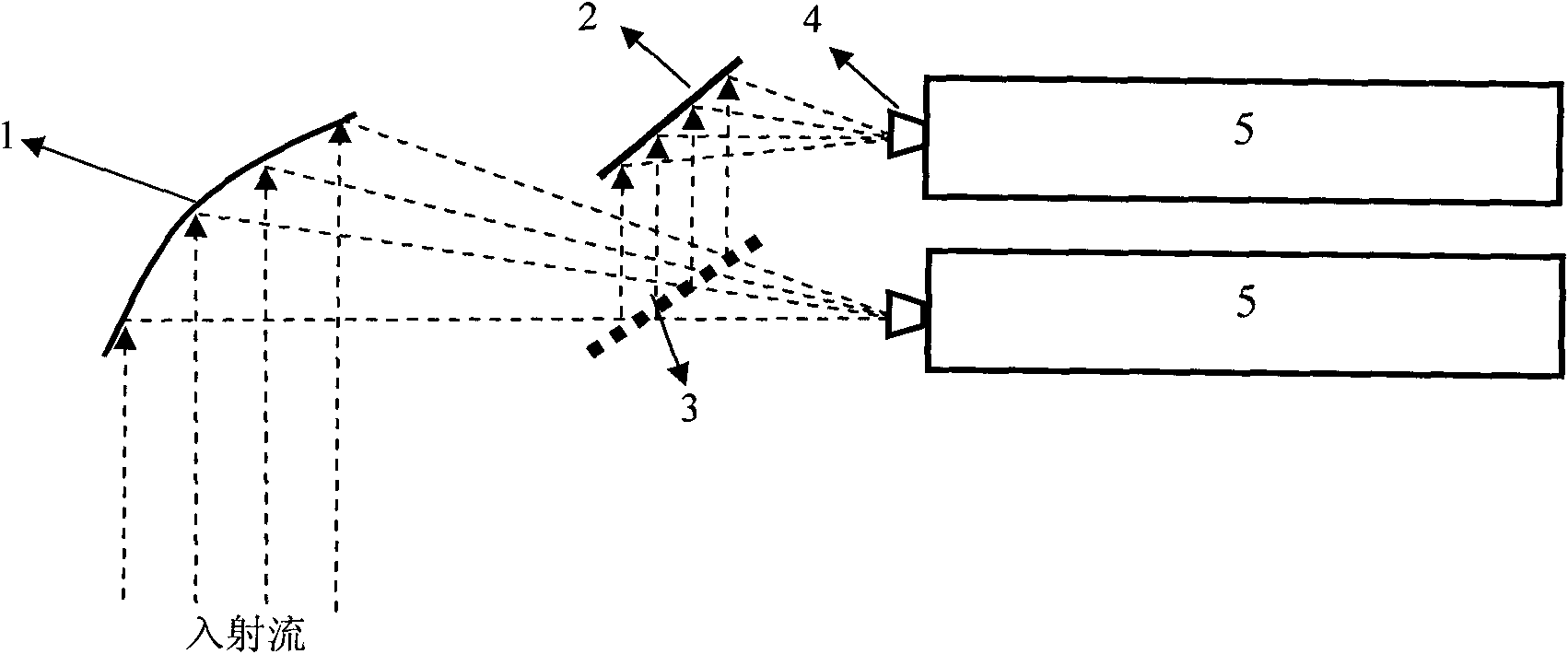Satellite-borne dual-polarization millimeter wave radiometer adopting quasi-optic technique
A technology of millimeter wave and radiometer, which is applied in the direction of using re-radiation, radio wave reflection/re-radiation, radio wave measurement system, etc., can solve the problems of system sensitivity drop, affect system performance, mechanical interface mismatch, etc., and achieve improvement System sensitivity, superior effect
- Summary
- Abstract
- Description
- Claims
- Application Information
AI Technical Summary
Problems solved by technology
Method used
Image
Examples
Embodiment Construction
[0023] The content of the present invention will be further described below in conjunction with the accompanying drawings.
[0024] Such as figure 2 As shown, the radiometer is composed of an antenna, a quasi-optical polarization separator 3 and a millimeter wave receiver 5 . The antenna consists of a primary reflector 1 and a secondary reflector 2. The primary reflector 1 is a parabolic antenna reflector, and the secondary reflector 2 is a flat reflector, which is made of metal materials. The function of the two is to receive the target signal The incident stream is fed to a mmWave receiver. The size of the primary reflector 1 and the secondary reflector 2 is designed according to the specific requirements of different satellite systems, and the material can be selected from LY12 aluminum alloy or according to the design and construction specifications of different satellite models.
[0025] The function of the polarization separator is to separate the fully polarized sign...
PUM
 Login to View More
Login to View More Abstract
Description
Claims
Application Information
 Login to View More
Login to View More - R&D
- Intellectual Property
- Life Sciences
- Materials
- Tech Scout
- Unparalleled Data Quality
- Higher Quality Content
- 60% Fewer Hallucinations
Browse by: Latest US Patents, China's latest patents, Technical Efficacy Thesaurus, Application Domain, Technology Topic, Popular Technical Reports.
© 2025 PatSnap. All rights reserved.Legal|Privacy policy|Modern Slavery Act Transparency Statement|Sitemap|About US| Contact US: help@patsnap.com



